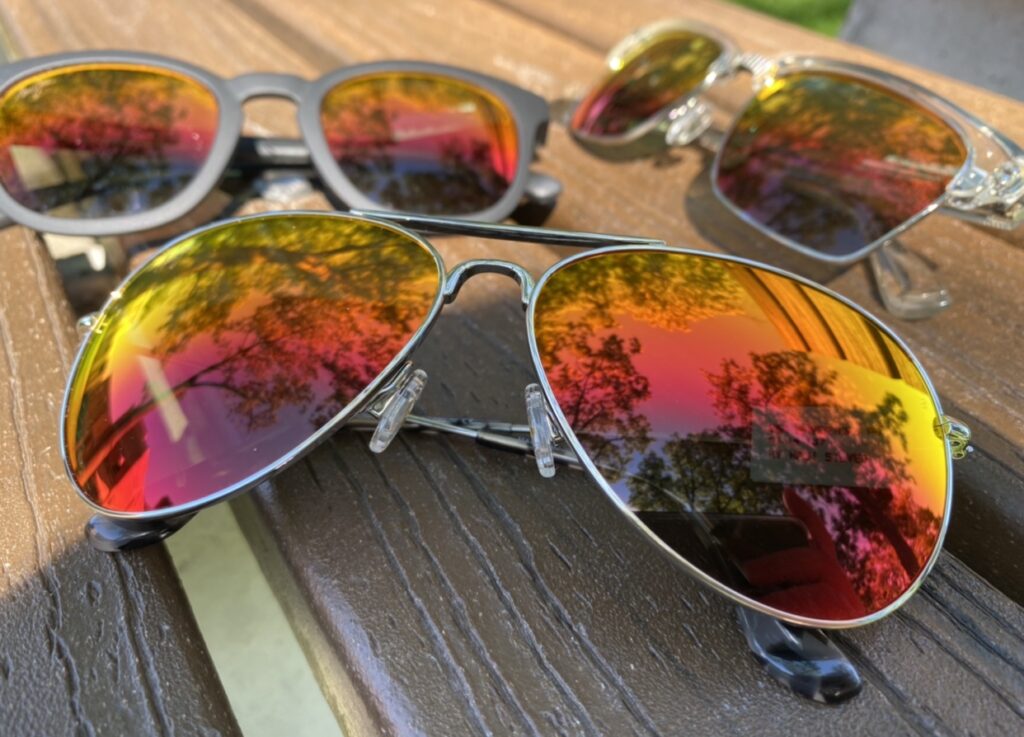We all put on our sunglasses every day (or at least you should) when we walk out the door on a sunny day, but have you ever thought about how your sunglasses work and the technology behind them when it comes to protecting your eyes? We decided it would be fun to lay it all out for you!
Different types of UV rays
There are many different types of UV rays, but the ones that affect our eyes the most are UVA and UVB rays. Both types of UV rays are those that reach the earth and can be harmful to a person’s eyes. Sunglasses are designed to reflect both of these types of rays.
Types of sunglasses
There are many different types of sunglasses that all serve different purposes. It’s important to decide which ones are best for you and what you are using them for (i.e., driving, outdoor sports, etc.).

Prescription
Lenses are the same as your eyeglass prescription, but they have a tint to them to protect the sunlight.
Gradient lenses
These lenses have a darker tint at the top and get lighter towards the bottom. This allows for more protection from overhead sunlight.
Transition lenses
Lenses adjust to the brightness of the sunlight.
Mirrored
Lenses look like a mirror on the outside and work in the most bright conditions.
Polarized
Lenses have a special lamination on them which blocks horizontal light and sun glares.
How do sunglasses actually work?
Sunglasses are designed to protect your eyes from damaging UVA and UVB rays. UVA rays can damage the retina, which is in the back of your eye. UVB rays can damage the front of your eye in the cornea. When you are wearing proper sunglasses, the UV rays are unable to get into your eyes. If they did, you could eventually potentially suffer from eye damage or loss of vision.
When you are shopping for sunglasses, it’s important to make sure that the ones you choose protect you from 99% of UV rays. Otherwise, you are risking damage to your eyes. Stop in at the Sunglass Shoppe, and we can fit you for the right sunglasses that fit your needs and lifestyle.















